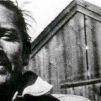
Rem Koolhaas is a rare combination of a theoretician and a prophet. His urban planning ideas made Rem one of the most renowned contemporary architects way before any of his projects came to life. Koolhaas’s theoretical writings are the most provocative and, in many ways, the least recognized contributions to world architecture. This article covers the life and main projects of the Dutch urbanism legend, whose modern works are no less revolutionary than his early concepts.
Childhood
Remment Lucas Koolhaas was born in Rotterdam in 1944. Growing up in the center of a major naval city destroyed by German bombings, Rem witnessed the birth of grandiose modernist plans. While many from his generation hated post-war artifacts, kid Koolhaas played on the ruins of the State Archive building and found its ghostly symmetries and rigid spaces mesmerizing.

Rem’s father, Anton Koolhaas, was a writer, theater critic, director of a film school, and editor of a weekly newspaper. Rem’s father actively advocated the independence of Indonesia from Holland, and when the country received it, he was invited to become the head of the cultural program of Jakarta. Rem spent almost four years in an exotic environment, where he encountered a metropolis and all its moral contradictions for the first time.
Youth
When Rem was 15, the family returned to the Netherlands, where four years later, he began his career as a journalist for Haagse Post. Koolhaas attended literary and art circles in Amsterdam, where he met Dutch surrealist writers and a group of young filmmakers 1, 2, 3 Group under the leadership of Rene Daalder, which he later joined.
In 1965 Rem starred in the short film 1, 2, 3 Rhapsody, collaborated with Jan de Bont, who later directed Speed (1994) and Tornado (1996). The experience in cinema influenced Koolhaas’s architectural practice from a structural and conceptual perspective. There are incredible similarities between filmmaking and architecture; once he said: “You are looking at episodes, and you have to structure the narrative in a way that it is interesting and mysterious.” When you enter the buildings created by Koolhaas, it is indeed as if you are in an edited film. Only instead of frames, there are spaces that change into one another.
Architecture
Rem decided to become an architect after the 1967 trip to the USSR, where he got acquainted with the works of Rodchenko and the theory of desurbanism, which denies the positive role of large cities.

He was amazed by a series of avant-garde architectural illustrations that expressed vivid ideas and defined the content of a society.
At 28, Koolhaas entered the Architectural Association School of London (AA). His final project was called The Exodus and was a fantasy of dividing London with a Berlin-style wall. The drawings Rem made for this project were daring examples of modernist utopias.
In 1972, he received a Harkness Fellowship in the United States, where he completed his architectural studies under the direction of Oswald Ungers and Peter Eisenman at Cornell University, and then became a Visiting Fellow at the Institute of Architecture and Urban Studies in New York.
OMA Bureau
After studying in New York, Koolhaas returned to London, where in 1975 he founded his own firm – Office for Metropolitan Architecture. Rem started working on a series of conceptual projects to address the needs of modern society and create contemporary architecture.
In 1987, OMA received its first major project, the Dutch Dance Theater in The Hague. The resulting three-level building was the embodiment of many of Rem’s early ideas and brought the studio worldwide fame. Later, OMA participated in various competitions, which was very risky. The firm invested enormous amounts of time and money in projects that ended up on paper. To stay afloat, the firm sold architectural models and blueprints, and Koolhaas himself agreed to teach at Harvard.
The architect conducted the first field test of his urban theories in 1994 when the problem of unfinished buildings was put at the forefront of the bureau work. During this time, OMA won a competition to design a vast area on the outskirts of Lille, France. Connected to a new high-speed rail line, the Euralille project included a shopping mall, convention and exhibition center, and office towers surrounded by a jumble of motorways and railways.

Fame
Despite the numerous failures, by 2000, Koolhaas had created projects in many countries, including the Netherlands, France, Portugal, Korea, Japan, and Germany. For his achievements, he received the Pritzker Prize, becoming the first Dutchman to be so honored.
The Prize made Koolhaas’s work even more significant and finally secured him the title of a “starchitect”, although Rem himself still doubts the status. Following the victory, OMA worked on several international projects such as the Guggenheim Hermitage in Las Vegas (2001), Casa da Musica in Porto (2003), the Malingue Gallery in Hong Kong (2010), and the China Television Center in Beijing (2012).
However, Koolhaas’s most provocative and, in many ways, least understood, contributions to the cultural landscape are urban theories. Like Le Corbusier, Rem has an amazing ability to write brilliant, provocative essays and create amazing spaces. He argues that the city’s glory lies in its exceptional, excessive, and extreme nature.





